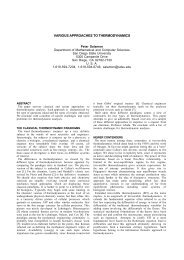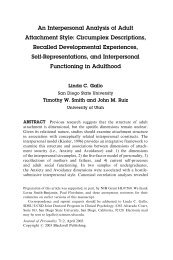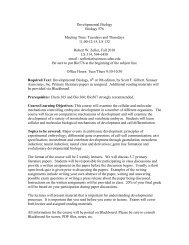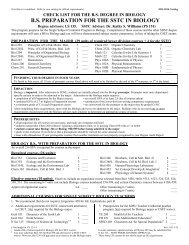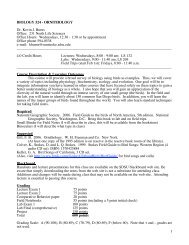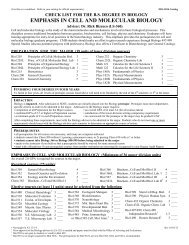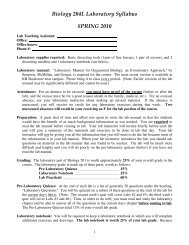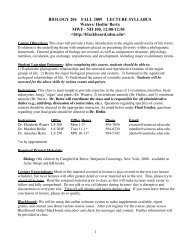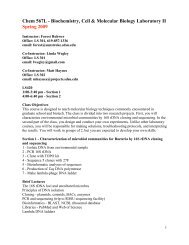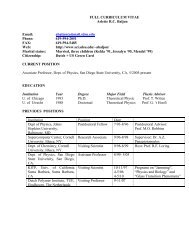Microcatchment Water Harvesting for Desert Revegetation
Microcatchment Water Harvesting for Desert Revegetation
Microcatchment Water Harvesting for Desert Revegetation
You also want an ePaper? Increase the reach of your titles
YUMPU automatically turns print PDFs into web optimized ePapers that Google loves.
Report from the field<br />
Fred Fred Edwards Edwards and<br />
and<br />
David David Bainbridge<br />
Bainbridge<br />
Both Both of of us us us have have worked worked worked in<br />
in<br />
developing developing countries. countries. As As we we have<br />
have<br />
worked, worked, traveled traveled and and talked talked to to<br />
to<br />
people,people, we we have have become become conconvincedvinced<br />
that that reversing reversing reversing desertifidesertifi-<br />
cation, cation, reducing reducing reducing soil soil erosion erosion and<br />
and<br />
increasing increasing increasing production production from from from arid<br />
arid <strong>Water</strong> harvesting - Jordan<br />
andand semi-arid semi-arid regions regions are are criticriticriti- cal cal global global issues. issues. In In developing developing countries, countries, revegetation<br />
revegetation<br />
methods methods need need to to be be economical economical and and adaptable adaptable to to hand<br />
hand<br />
labor,labor, but but in in in countries countries where where where labor labor costs costs are are high, high, high, methmeth-<br />
ods ods ods must must must be be mechanized. mechanized. Rainfall Rainfall catchment catchment construction<br />
construction<br />
can can fill fill both both needs. needs. It It is is a a simple simple technique technique adaptable adaptable to<br />
to<br />
local local labor labor and and materials materials in in drylands drylands drylands anywhere anywhere in in the<br />
the<br />
world. world. Like Like most most most revegetation revegetation techniques techniques <strong>for</strong> <strong>for</strong> arid arid lands,<br />
lands,<br />
it it does does not not work work without without rainfall; rainfall; but, but, when when the the rain rain does<br />
does<br />
come, come, rainfall rainfall catchments catchments can can be be used used to to focus focus water water<br />
water<br />
where where it it will will do do the the the most most good. good.<br />
good.<br />
Like Like Like many many great great solutions solutions to to to environmental environmental environmental problems,<br />
problems,<br />
rainfall rainfall catchments catchments are are a a reinterpretation reinterpretation of of of ancient ancient<br />
ancient<br />
techniques techniques developed developed in in the the Middle Middle East East East and and Americas, Americas,<br />
Americas,<br />
but but <strong>for</strong>gotten <strong>for</strong>gotten by by modern modern science science and and technology. technology. In In the<br />
the<br />
Mojave Mojave and and Colorado Colorado deserts deserts of of Cali<strong>for</strong>nia, Cali<strong>for</strong>nia, we we have have found<br />
found<br />
thisthis simple simple technique technique technique can can improve improve the the survival survival survival of of transtrans-<br />
planted planted native native seedlings seedlings by by more more than than 20%. 20%. 20%. Because Because this<br />
this<br />
technique technique is is simple, simple, additional additional construction construction costs costs are<br />
are<br />
offset offset by by by the the the savings savings savings gained gained gained by by by increased increased increased survival survival and and<br />
and<br />
the the the reduced reduced need need to to replant. replant. We We highly highly recommend recommend recommend this<br />
this<br />
technique technique <strong>for</strong> <strong>for</strong> restoration restoration and and revegetation revegetation revegetation projects<br />
projects<br />
undertaken undertaken in in arid arid arid and and semi-arid semi-arid environments.<br />
environments.



